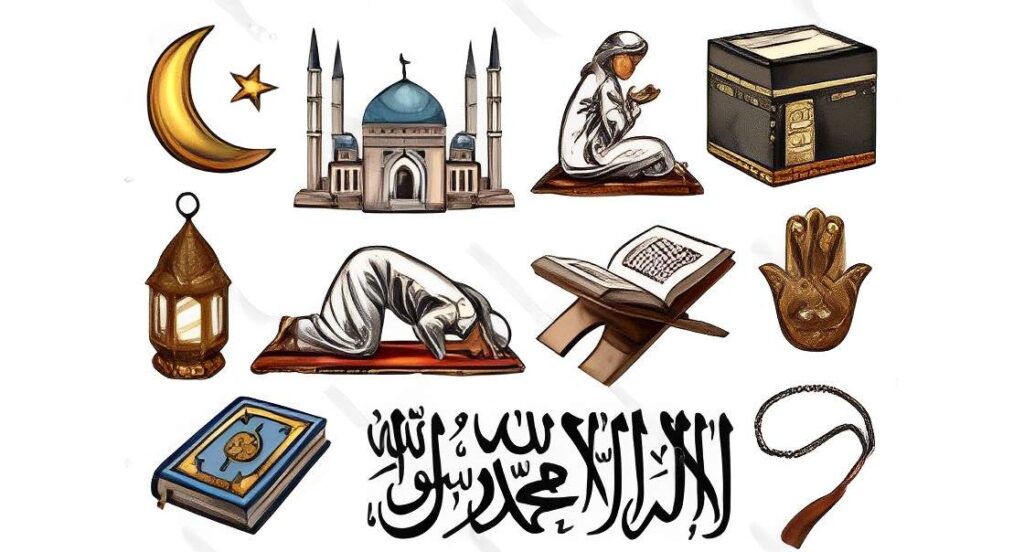Objects of Islam

Islamic culture involves various objects that hold significance in religious practices, daily life, and art. Here are some objects that are important in Islamic culture:
- Prayer Rug (Sajjadah): A small rug used for daily prayers. It often has a design indicating the direction of Mecca (qibla) to ensure accurate prayer direction.
- Prayer Beads (Misbaha or Tasbih): Used for the recitation of dhikr (remembrance of God). Muslims often use prayer beads to count the repetition of specific phrases.
- Calligraphy: Intricate and artistic writing of Quranic verses or other religious texts. Arabic calligraphy is highly revered in Islamic art.
- Mosque Architecture: Mosques are places of worship for Muslims and often showcase distinctive architectural styles. Elements like minarets, domes, and prayer halls are significant features.
- Islamic Carpets: Intricately woven carpets featuring intricate designs and patterns. These carpets often have geometric, floral, or calligraphic motifs and are used for prayer or decoration.
- Kaaba Cloth (Kiswah): The cloth that covers the Kaaba in Mecca. It’s changed annually and holds special significance during Hajj.
- Turbans and Headscarves: Turbans are worn by some Muslim men, while women often wear headscarves, such as the hijab or niqab, for modesty and religious observance.
- Islamic Manuscripts: Handwritten copies of the Quran or other religious texts, often adorned with intricate decorations and calligraphy.
- Crescent and Star: While not religious symbols, the crescent moon and star are often associated with Islamic culture and can be seen on flags and other objects.
- Arabic Perfume Bottles: Decorative glass bottles used to hold perfumes, often displayed in homes as part of Islamic cultural aesthetics.
- Islamic Pottery and Tiles: Ceramic and tilework with intricate patterns, often featuring geometric designs, calligraphy, and floral motifs.
- Seal Rings: Some Muslims use seal rings with religious inscriptions for legal documents or as personal items.
- Lanterns (Fanous): Decorative lanterns often used during special occasions and festivals, such as Ramadan.
- Books of Hadith: Collections of sayings and actions of the Prophet Muhammad, providing guidance on various aspects of life.
- Islamic Clothing: Clothing adheres to modesty standards and varies based on cultural and regional practices.
These objects reflect the rich cultural and artistic heritage of Islamic civilizations. They hold spiritual, aesthetic, and functional importance in the lives of Muslims and contribute to the diversity and beauty of Islamic culture.

